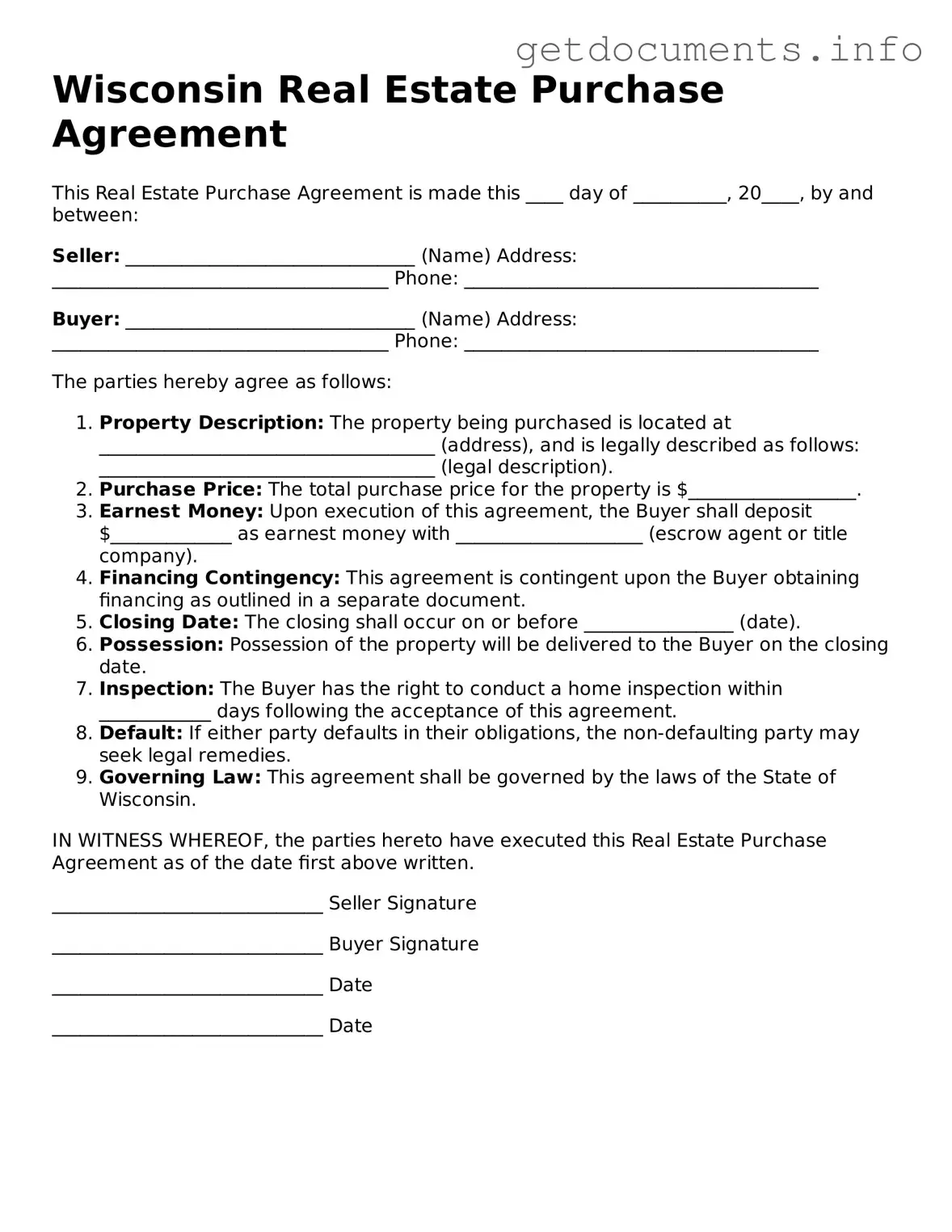Free Real Estate Purchase Agreement Template for Wisconsin
The Wisconsin Real Estate Purchase Agreement form is a legal document that outlines the terms and conditions of a real estate transaction in Wisconsin. It serves as a binding contract between the buyer and seller, detailing the property specifics, purchase price, and other essential elements. Understanding this form is crucial for anyone looking to navigate the real estate market in Wisconsin.
Ready to take the next step? Fill out the form by clicking the button below.
Access Real Estate Purchase Agreement Editor
